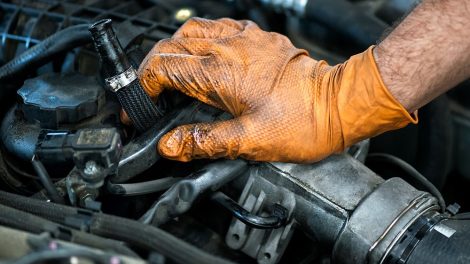The CV boot protects the joint and axle internals. Separation of the boot exposes sensitive components to dirt and debris. Even without a visible tear, separation allows grease to escape rapidly. Healthy boots maintain joint lubrication and prevent contamination consistently. Understanding axle boot separation improves maintenance and prevents joint failure effectively. Proper care preserves driveline integrity and reduces repair costs reliably. Acting promptly restores protection and ensures smooth torque transfer consistently. Boot attachment is critical for long-term CV joint durability and safety. Ignoring separation leads to accelerated wear and potential catastrophic failure. For professional inspection and repair, trust Auto Repair in Buford, GA.
Causes of Separation
Separation often results from improper installation or degraded clamps over time. Repeated stress from rotation and steering angles can loosen the boot. Harsh driving conditions accelerate detachment and reduce component protection quickly. Mechanics inspect attachment points during service for looseness or movement carefully. Re-securing or replacing the boot restores proper coverage and lubrication effectively. Healthy boots remain snug preventing grease loss and internal damage reliably. Ignoring loose boots allows contamination and accelerated wear continuously. Proper installation reduces the risk of unexpected separation during vehicle operation. Separation is a silent precursor to more severe CV joint damage.
Impact on Lubrication
Detached boots allow grease to escape reducing internal lubrication immediately. Insufficient lubrication increases friction heat and wear on bearings and races. Dry joints produce noise vibration and can seize under load consistently. Mechanics assess grease condition when inspecting suspected boot separation carefully. Reapplying grease and re-securing the boot restores smooth torque transfer reliably. Healthy lubrication maintains ball bearings cage and races in optimal condition. Ignoring lubrication loss accelerates wear and may lead to complete failure. Proper boot integrity preserves internal grease and reduces stress on components. Lubrication loss from separation is a critical factor in joint degradation.
Noise and Vibration
Axle boot separation often causes clunking clicking and rumbling sounds. Escaping grease reduces smooth rotation and increases internal friction noticeably. Noise intensifies during acceleration, turns, or under heavy load gradually. Mechanics detect boot separation by observing unusual sounds and vibration carefully. Reattaching or replacing the boot restores quiet operation and smooth rotation reliably. Healthy boots maintain smooth torque transfer and absorb internal stresses consistently.
Conclusion
Axle boot separation compromises CV joint durability gradually over time repeatedly. Detached boots allow grease loss contamination and increased internal friction immediately. Damaged joints produce noise vibration and risk sudden driveline failure. Early detection prevents secondary damage and restores smooth torque transfer. Reattaching or replacing the boot ensures proper protection and lubrication. Healthy CV joints maintain handling stability and overall driveline performance efficiently. Detecting boot separation early reduces repair costs and prevents immobilization. Proper maintenance preserves internal component integrity and prolongs joint lifespan. Acting promptly guarantees smooth safe driving and long-term CV joint health. Boot attachment is essential for preventing catastrophic internal failure reliably.








